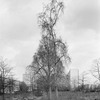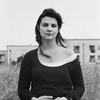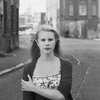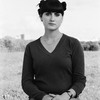A Conversation with Ute and Werner Mahler
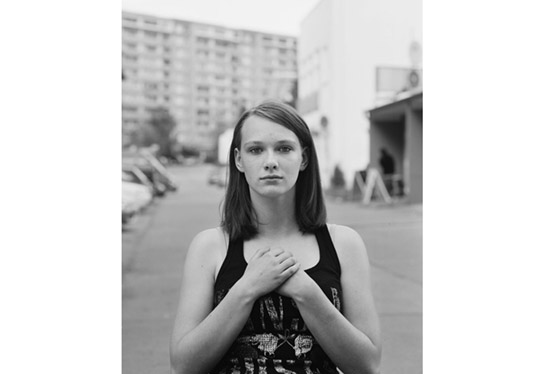
I remember then when I saw portraits from “Mona Lisas of the suburbs” by Ute Mahler and Werner Mahler for the first time, I was blown away. Seemingly very simple photographs, the portraits reveal enormous depth, while at the same time they are incredibly beautiful. To make a long story short, there had been some plans to make a book, so after some discussions Ute and Werner decided to do it with Meier & Müller, the photobook publishing venture I’m part of. The book is now out (in Europe, US copies are in transit), so I asked the photographers some questions about this very special project - their first together, as a married couple, after each being a photographer for almost forty years. (more)
Jörg Colberg: After many years of working as photographers separately, the Mona Lisas now are a major photo project as a married couple. How did this come about? You know each other so well - did that make work together easier?
Ute Mahler: We have always lived with each other’s images. Werner has mentally participated in each of my works, he has always been the first to see results. And it’s the same the other way around. Therefore, it seems obvious to me that we would do a photo project together.
JC: What is the idea behind the Mona Lisas? And how did it develop?
UM: Originally I wanted to photograph portraits of women in landscape settings. I’m very interested in timeless faces: faces that do not speak of something that is en vogue, but that are very distint. And that linger in your memory because of that.
At Ostkreuz every five years, we do a free project. When we planned “The City - Becoming and Decaying” we had the idea to photograph portraits of women in front of cityscapes. In many parts of the world, suburbs are similar. They are neither tranquil nor architecturally exciting. They are practical, but they hardly reveal character.
The more I thought about the idea and the more I talked with Werner about how to do it, the more obvious it became that we should do it together. In the beginning, we weren’t used to creating a concept together and working on it. But once the project was on its way, by working together we developed a sense of security and ease, which made the work a lot of fun despite its difficulties.
JC: I’m interested in the “selection” of models - how do we have to think of that? When you are waiting somewhere for models - what are you looking for?
Werner Mahler: First, we are looking for the location. When we have made a decision about the background, we wait for a woman whose face interests us. The difficulty is to decide very quickly about contacting them because the women are on their way to work or to school, they are coming from the supermarket, or they brought their children to the kindergarten. We interrupt their daily life with our request to photograph them. And we try to photograph an expression of abandon, despite the noise and commotion around us. It’s hard to explain what kind of face we’re looking for. You simply see it, and when you’re lucky you get it on film.
JC: I got to ask more here: What is important about the background? What are you looking for? And how do you get that expression of abandon on your models’ faces, what with all the background noise and commotion?
WM: When we started the project, we spent a lot of time in each city to develop a feel for it (in our cases the suburbs). In order to find that which is special we also looked for the architectural general. So we avoided all unusual backgrounds. We did not want anything “exotic”. The same way we photographed the architectural photographs. In a sense, they are portraits of the cities.
Maybe I need to expand the notion of “abandon” and say that the women are focused on themselves. They are very aware of the fact that the photo is about them, only about them and nothing else. We talked with them about it. Of course, you don’t always succeed. There are many additional factors: The sitter’s level of confidence, how persuasive we were, the situation around us. The most important factor: Can we develop trust between us? When everything works together, there will be a good photo.
JC: Is there a “director” during the shoot? Or do you work very closely together?
UM: There are parts of the process that we divided up. But the important decisions - where to shoot, how to do it, which woman to pick - are made together. We pose for each other. In terms of composition, the photo is set up before the real “Mona Lisa” sits down. That works very well.
JC: Later, when you edit the work are there differences between you because of the female and male gaze? How do you decide about uncertain cases?
WM: When we select contact sheets we have intense discussions. Of course, there is a big difference between our gazes. But that’s what makes the work together thrilling. Once you agree on something the result tends to be convincing.
UM: For me, every face has a beauty that might not necessarily conform with today’s criteria of what is beautiful. I’m not interested in superficial beauty. That bores me quickly. Maybe it’s because I spent so much time in the 1980s doing fashion photography.
JC: So how does it work dealing with the female and male gaze towards a woman? Do you need to compromise?
UM: For Werner and me it was very clear what we were looking for, what we wanted to photograph. But already when selecting models we had different opinions. Of course, I was sometimes surprised to see how different our interpretations could be. It’s likely that we all connect the notion of beauty with different attributes. When photographing we allowed for these differences to exist, and we saw them as enhancing our work. We later had discussions when editing the photographs. Occasionally, they got heated. Sometimes, you have to compromise. But a good photographs always is a good photograph. That’s what it was always about. We both had to be convinced of the result.
JC: If I may ask: Will you work on projects together in the future?
WM: We have been on the road for a few months already, working on a new project. This time, it’s not portraits. And it’s in colour. We are also more open towards finding things. When you put together two people with forty years of photography experience, the result is sure to be very interesting.
Mona Lisas of the Suburbs is now available in Europe, via Meier & Müller. Copies for the US market are currently in transit and expected to be available near the end of September, 2011.
 By
By 